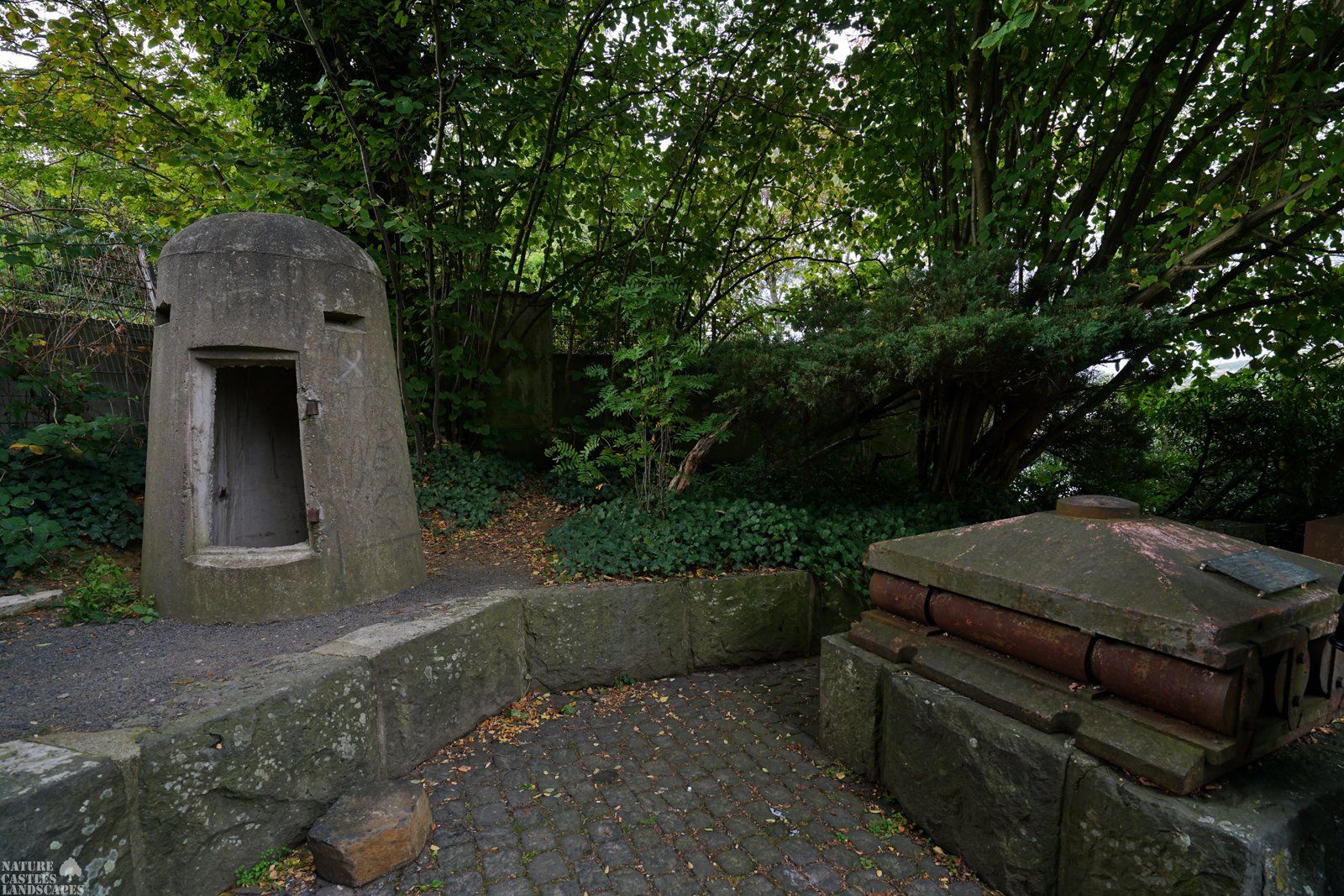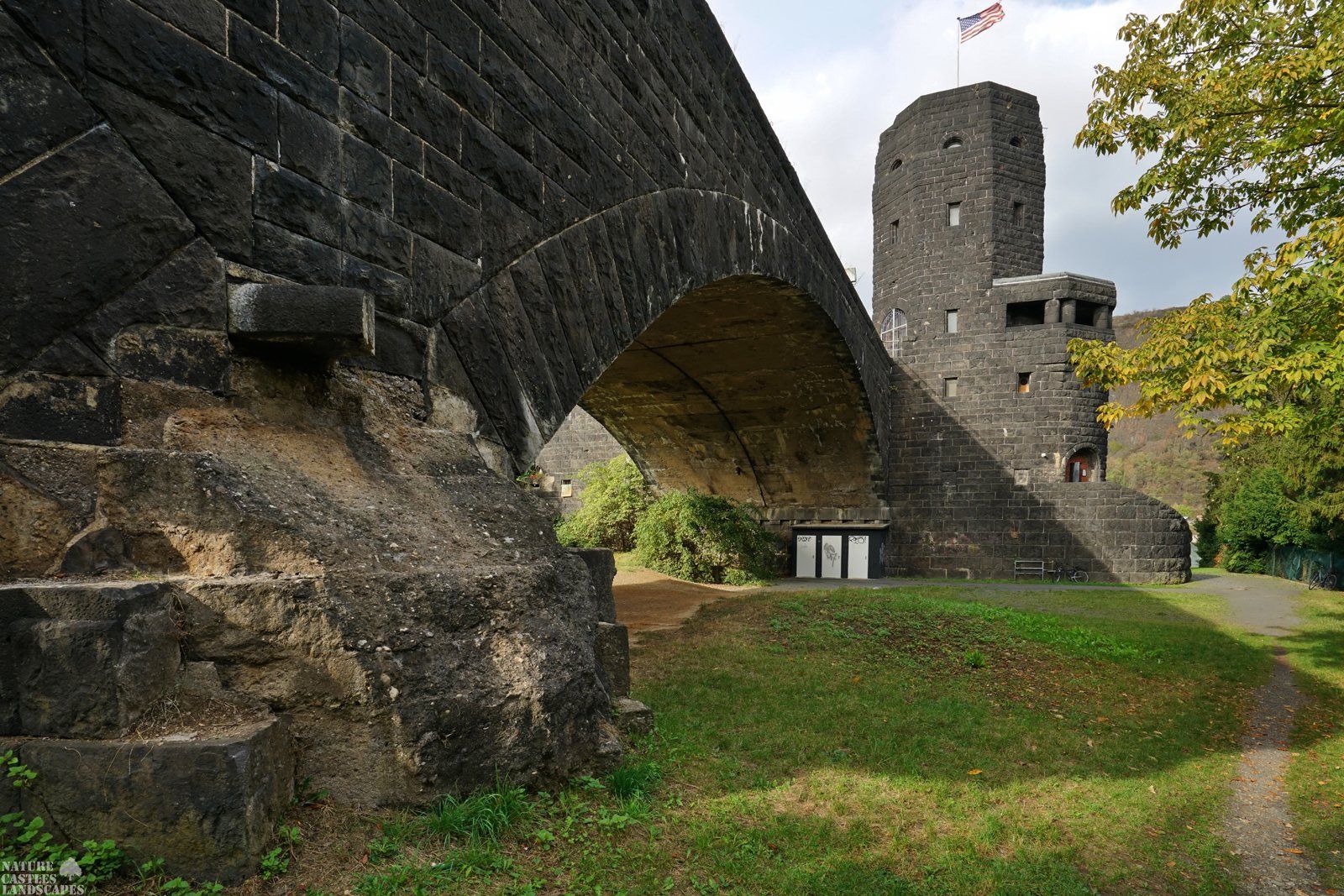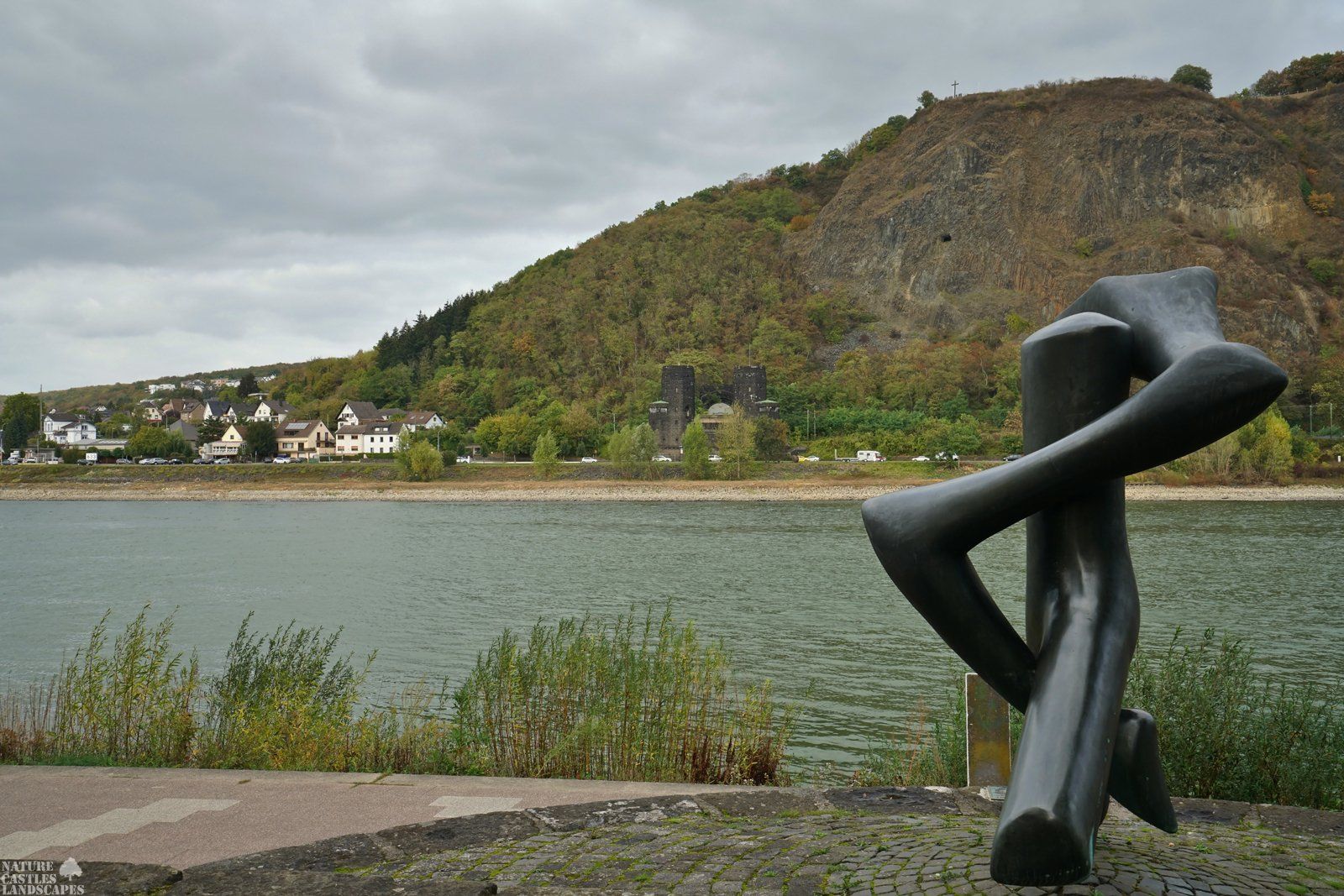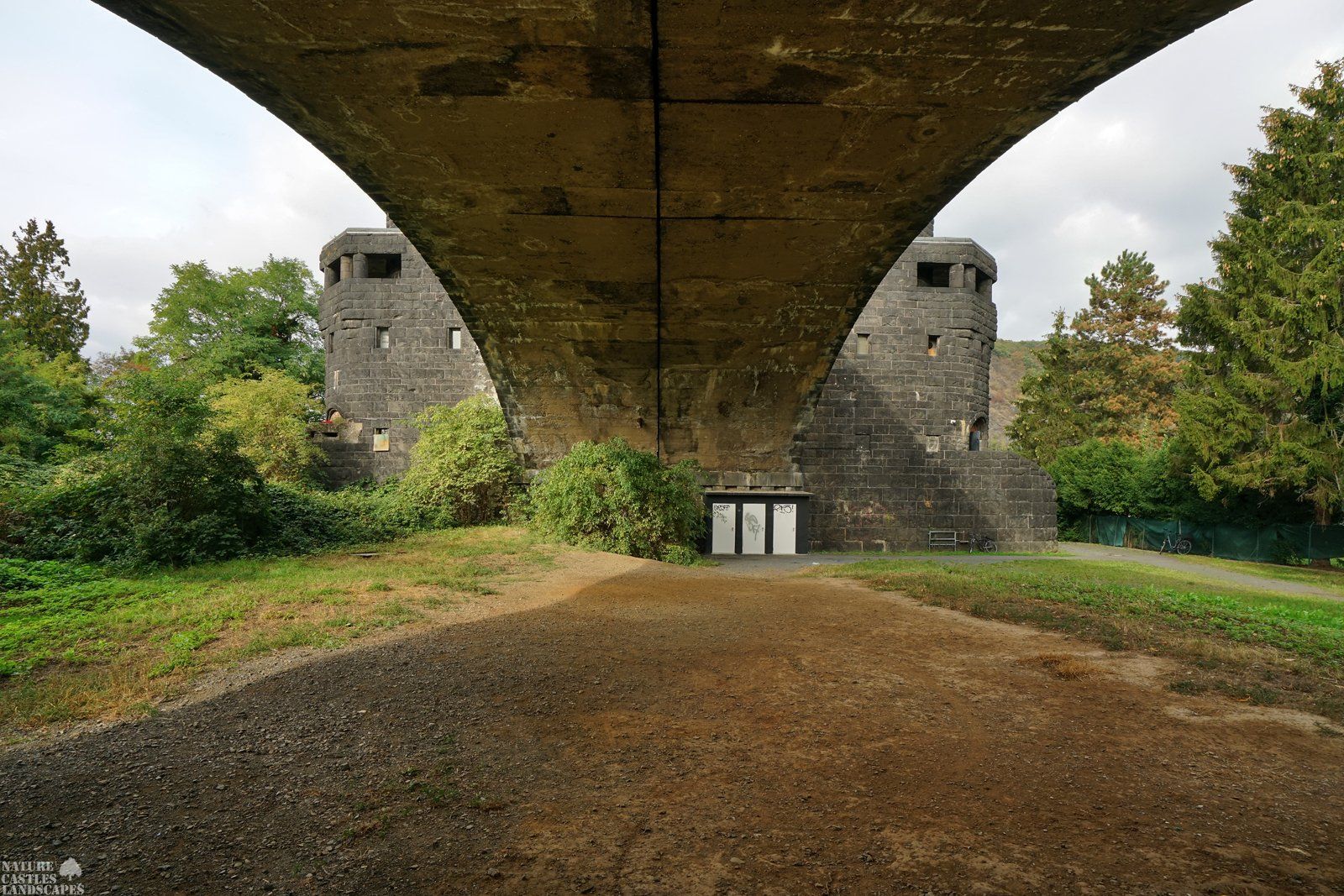BRIDGE AT REMAGEN
A HISTORIC PLACE
One of the most amazing stories of the end of the war in the West took place at the bridge of Remagen. The last Rhine bridge not blown up by the Germans was conquered by the US Army and used for a rapid advance on the right bank of the Rhine. This has shortened the war on the Rhine and Ruhr by weeks.
One of the most amazing stories of the end of the war in the West took place at the bridge of Remagen. The last Rhine bridge not blown up by the Germans was conquered by the US Army and used for a rapid advance on the right bank of the Rhine. This has shortened the war on the Rhine and Ruhr by weeks.
Ludendorff Bridge
Almost 75 years ago, to be precise on March 7, 1945, the Remagen Bridge was the last Rhine bridge not to be blown up by the Germans to be conquered by the US Army. The events of the time were ultimately more than decisive for the war, and this conquest is still considered one of the most astonishing stories of the end of the war in the West. I would like to tell you a little more about this occasion.
As I said, the small picturesque town of Remagen, about 20 kilometers upstream from Bonn, became the scene of dramatic events in World War II that were to have a decisive influence on the course of the war.
As I said, the small picturesque town of Remagen, about 20 kilometers upstream from Bonn, became the scene of dramatic events in World War II that were to have a decisive influence on the course of the war.
The construction of the bridge
The Ludendorff Bridge, as it was actually called, was built in 1916 during the First World War at the urging of the German general, in order to be able to bring more troops and war material to the western front. Your bridge towers are located on the left bank of the Rhine at the southern end of the Remagen Rhine promenade and on the right bank of the Rhine on the southern outskirts of Erpel at the foot of the Erpeler Ley. As part of the Schlieffen plan, a bridge was already planned at this point in 1912, as was the Kronprinzenbrücke near Urmitz and the Hindenburgbrücke near Rüdesheim. The bridge was only built from 1916 to 1918 at the urging of the German generality. It was part of a "family of bridges" consisting of three similar railway bridges over the Rhine, was primarily intended to serve as a connection from the Right Rhine section via the Ahr Valley Railway to the Eifel Railway and improve supplies to the western front. The construction companies Grün & Bilfinger and Philipp Holzmann carried out the work on the bridge piers and vaults; the steel power bridge was built by the MAN Gustavsburg plant. Russian prisoners of war were also used in the construction work. Since the bridge was a militarily important building, both abutments of the bridge were provided with the fortress-like bridgeheads that are still preserved today. These towers are equipped with loopholes, troop accommodation for the bridge crews and storage facilities. From the flat roofs you have an excellent view over the entire valley. Right from the start, the bridge was designed in such a way that it could be quickly used for foot troops and road vehicles if necessary, by covering the railway sleepers with the wooden planks also stored in the towers. On April 25, 1918, Kaiser Wilhelm II gave permission for the newly built Rhine Bridge to be named Ludendorff Bridge in honor of the First Quartermaster, General of Erich Ludendorff's Infantry, and on May 1, 1918, the double-track railway bridge was officially christened. The following day, the City Council of Remagen appointed Ludendorff an honorary citizen. Incidentally, this railway bridge was designed by the architect Karl Wiener from Mannheim. It was 325 m long, its clear height above the normal water level of the Rhine was 14.80 m and the highest point of the arch was 29.25 m. Then on August 15, 1918, the official inauguration of the structure, considered one of the most beautiful steel bridges over the Rhine, took place. The bridge was there now, but there were no trains on it yet. Because of difficulties in the construction of the subsequent tunnel through the Erpeler Ley and the cut in Erpel, the rails could not be laid until mid-1919. Thus, the only soldiers who crossed them in the war were only returning from the war in the other direction, namely back home! The Cologne Railway Directorate took over the bridge on July 23, 1919, and the opening, including the supply lines, followed on September 1, 1919. The 4,642 t steel bridge cost around 2.1 million marks and was, incidentally, the last major construction project of the Prussian State Railways before these two Years later merged into the Deutsche Reichsbahngesellschaft.
At the beginning of the Weimar Republic, only a few trains rolled over the Rhine. See the last picture from the mid-20s. But pedestrians liked to use the connection from Remagen to get to the opposite drake. In the coming almost two decades of peace, the bridge was a tourist symbol of the RhinelandThe bridge in World War II
But when the Nazis assumed power, pioneers of the Reichswehr and the Wehrmacht carefully prepared it in 1936 for any destruction that might become necessary. At selected locations, space had already been prepared for a total of 600 kg of pioneering explosives during construction, the ignition of which would cause them to collapse. In 1939, at the beginning of the Second World War, the bridge was taken over by a bridge guard company and prepared for blasting. After the successful campaign by the Wehrmacht in the West, which is known to have started on May 10, 1940 and ended on June 22 with the occupation of northern France, the explosives were removed again and brought to a camp near Darmstadt. At that time there was no sign of the bridge's importance for the war. But that should change relatively quickly. Already on October 19, 1944, the bridge received a heavy Allied bomb hit and on December 29, 1944 and at the end of January 1945 it was bombed again. But when the Allied reconnaissance aircraft discovered in mid-February 1945 that the bridge was actually the last permanent crossing over the Rhine, everything changed literally overnight! The Americans had pushed through to Meckenheim on March 6. Their task was to advance to the Rhine and, if possible, then build a barrier to intercept the German soldiers flooding backwards here. But when in the late morning of March 7th American tanks stopped at the Apollinaris Bridge and looked down into the town from the forecourt of the church, there was, as the spies reported, an intact bridge over the Rhine directly in front of their noses. The only stupid thing was to take an order to conquer the bridge, there was no such thing, because the American General Staff had been sweaty to issue the corresponding order. So the telephones ran hot and people asked, what are we going to do?
Well, on the other hand, things weren't going so well. Because although the advance of the Americans had been expected on the German side, he still surprisingly hit the Remagen command. According to a report by the former Mayor of Remagen, Peter Kürten, it sounds like this: "On the German side, of course, it looked bleak. The command of the bridge was constantly changing. The bridge commander, Captain Wilhelm Bratge, had to inquire practically every day who is now his commander. " The German combat commander from Remagen actually wanted to blow up the bridge as early as possible. On the morning of March 7, 1945, he had only 36 real soldiers at the bridge. The troops of the 1st US Army now passed Remagen north and south, as they expected the bridge to be blown up soon. Some of the population sought refuge in the railway tunnel, which adjoins the bridge on the right bank of the Rhine. The confusion on the German side led to the transfer of authority at night to Major Hans Scheller, the adjutant of the LXVII used between Remagen and Schleiden. Army corps under Otto Hitzfeld, of which Captain Bratge found out only on March 7 at 11:00 a.m. But even the highly decorated Major Scheller, who was hastily summoned, could not get the situation under control, as Kürten said: "Then Scheller took command and tried, with the help of the armed forces that flooded by chance by the bridge, because it was going everything on the other side of the Rhine because word got around how far the Americans were to set up a kind of stabilization front, but that didn't work at all. People said in part, yes, Major, were on the other side and did that And the bridge company basically consisted of a group of people around 40 to 80 years old, with different rifles, supposedly there wasn't even ammunition for every rifle. " Added to this was the fact that the orders of the new bridge command from the old bridge commandant were clearly different. The major should now keep the bridge open as long as possible so that as many German soldiers and their heavy equipment as possible, i.e. some tanks and artillery pieces, could cross the bridge. The responsible bridge officer, Captain Friesenhahn, has meanwhile requested 600 kg of pioneering explosives, but at 11:30 a.m. he only received 300 kg of donarite, a considerably weaker industrial explosive of the kind used in mining. He tried to use it for a quick blast on the right bank of the Rhine.The US side was more determined, to be exact, an American staff officer literally burst his collar and gave the order to attack.
On March 7, 1945 at 1 p.m. a small vanguard of the 9th US Panzer Division, led by 22-year-old 2nd Lieutenant Karl H. Timmermann, of German descent, managed to reach the still completely intact bridge. At 1:40 p.m., the Allied soldiers attacked the bridge, supported by a small unit of the 7th Armored Division. The first detonation of the Germans, who detonated some of the loads, tore a ten meter wide crater into the ramp on the left bank of the Rhine. At 3:40 p.m. the Germans, on the orders of Major Hans Scheller, tried to blow up the bridge completely. With Donarit, great idea. It would be something like trying to break down a truck with its firecracker into its individual parts. And the bridge was also quite unimpressed. She rose a little, but fell back into her bed. Three soldiers then ran to the bridge to cut the remaining explosive cables, without knowing that at the end only a fraction of the required amount of explosives was stored. But never mind, they actually made it, with at least one of them doing it completely unmoved in the heavy German machine gun fire. By the way, Lieutenant Timmermann and twelve other soldiers were later awarded the “Distinguished Service Cross” for conquering the bridge. The Parforce company was successful and on the evening of March 7, 1945, the bridge was in the hands of the Americans. US Commander in Chief General Eisenhower said: "The bridge is worth its weight in gold."The German army leadership tried desperately to bring the bridge to collapse in the following days by bombing and combat swimmers. Between March 8 and 9, 1945 alone, Wehrmacht soldiers shot about 3000 grenades at the bridge, but did not hit them. Sounds crazy, but it is true. They actually plowed the entire section of the Rhine including the banks around the bridge, but missed the bridge itself by up to 100 m. On March 10, 1945, a German counter-attack by the LXVII finally began. Army Corps, which was too weak to be successful. Logically, with 8 tanks and 400 men against 234 tanks and 3240 men, the entire company was doomed from the start. The completely demoralized army command then tried in the following days to have the bridge destroyed by combat swimmers. You should attach explosive devices to the piers below the waterline. With strong searchlights they could be discovered in time. In addition, from March 8 to 12, 1945, the Air Force tried unsuccessfully to bring the bridge to collapse through aerial bombing. No chance, the Americans had more flak stationed around the bridge than the Germans still had airplanes. On March 12, 1945, the climax of the air battle, the Americans shot down 26 aircraft and damaged nine more of a total of 91 attacking aircraft. For the first time, the German Arado Ar 234 jet bombers were used. The purchased mortar Karl, caliber 540 mm, also missed its target and had to stop firing after a short time due to technical problems. Between March 11th and 17th, the SS launcher department 500 fired eleven V2 rockets at the bridgehead from their position north of Hellendoorn in the Netherlands. A rocket struck a house some 270 m east of the bridge and shook it noticeably. Three US soldiers were killed and fifteen wounded. Three missiles landed near the bridge in the Rhine, five more west of the bridge, and the rest of them never disappeared towards Holland. Hitler thereupon, in an impotent rage, set up a quick court, which sentenced five officers to death and had four of them shot in the Westerwald. Only Lieutenant Bratke, the Remagen teacher, survived. He had been captured by the US during the storm on the bridge. Within a few days, thousands of American soldiers and vehicles crossed the badly damaged bridge. That ultimately shortened the war on the Rhine and Ruhr by weeks. Within the first 24 hours after the conquest, 8000 soldiers crossed the Rhine in an easterly direction on the bridge. General Eisenhower ordered the commander-in-chief of the 12th US Army Group, Omar N. Bradley, to move as many divisions as possible to the other bank of the Rhine, even if this thwarted the original plans. On March 17, the heavily damaged bridge collapsed on its own, killing at least 30 American soldiers. See fourth picture. But by then the Allies had been able to translate 18 regiments over the intact bridge at Remagen. Immediately after the Allies took it, US pioneers attempted to repair the weakened construction of the bridge, and three additional pontoon bridges were also built.
The bridge in Hollywood films
Conquering the Remagen Bridge has become a myth for the Americans. Even today, veterans make a pilgrimage to the Peace Museum, which Mayor Peter Kürten set up in one of the remaining bridge piers. The Germans also have reason to be grateful, he says: "It is really a military accident, but one that the Americans used and that shortened the war for quite a while. And if you know how many people these days died, how many values were destroyed in those days, then it was a stroke of luck for our region and for our city that the Americans succeeded. " Well, one thing is clear, the topic is still present in many different ways in the USA. For example, the bridge was mentioned in the movie “Monuments Men” from 2014, in which a special group led by George Clooney fought to save artifacts from the turmoil of war. And Hollywood would definitely not do that if no one could do anything with Remagen. Incidentally, this was not the first film on the subject. David L. Wolper produced the American feature film "The Bridge of Remagen" in 1968. This film shows the real historical background, but is otherwise freely designed. His plot has little to do with the actual events Incidentally, there was no enthusiasm in Remagen in 1968 because of too many logical inaccuracies and film errors. The film was shot far away from the small town, mostly curiously in what was then Czechoslovakia or not, the film has certainly made the building known. "It is very important for the perception of the event," says the Mainz film scientist Marcus Stiglegger claims that it is the last intact Rhein-Brü “The absolute, that's what the film is about,” says Stiglegger. Director John Guillermin was an "action veteran". He later shot "King Kong". But in spite of everything, what he couldn't show was a small but not to be underestimated fact. The conquest of the bridge may have saved Germany from dropping atomic bombs. Until the conquest of the bridge at Remagen, the Allies had assumed that the war would last until autumn 1945, and then nuclear bomb targets would have been considered to force the Germans to surrender. The American political scientist Andrew Denison, director of the research network Transatlantic Networks in Königswinter, thinks it is at least conceivable that such a bomb would have hit Germany in a long war. Taking the bridge was a stroke of luck. Otherwise a crossing with small jetties might have been necessary. And that would have been something like a small D-Day.
The bridge nowadays
In the post-war period, the Deutsche Bundesbahn considered actually actually rebuilding the bridge; In 1960 a cost forecast was made. After the electrification of the left and right Rhine lines until May 1962, these plans were dropped and the supply lines in Remagen and Erpel, which had been kept free until then, were later abandoned. The bridge's pier was removed from the river bed in the summer of 1976. All that remains today are the bridge towers on both sides and parts of the access ramp. Like the Erpel railway tunnel, they are listed buildings. Since March 7, 1980, the aforementioned Peace Museum has been set up inside the bridge towers on the Remagen side. The initiator of the museum was the long-time mayor of Remagen, Hans Peter Kürten, who on March 7, 1978, for the first time sold stones from fragments of the bridge's power pillars, which were only removed in 1976, as souvenirs. The echo was remarkable. With the income and the many photos and other original documents, he was able to set up the museum. By the way, the bridges are still available in the museum with a certificate of authenticity. At the time, Kürten had managed to get a job creation measure approved by the employment office. The towers were cleared out, doors and windows provided, the interior was painted and light was given. An exhibition in the towers tells the story of the bridge. A documentary video by the English military academy in Sandhurst shows what happened around March 7, 1945 in newsreels and interviews with eyewitnesses. The exhibition commemorates the construction, the conquest and the heavy fighting in the bridgehead, in which German, American, Belgian and English soldiers were involved, supplemented by extensive documentation of the more than 200 wars since 1945 a completely new permanent exhibition and since then 3,782,000 visitors have visited the Peace Museum.The bridge portal on the right bank of the Rhine near Erpel has been in little changed condition since the end of the war. Access to the towers is bricked up from one side and through a steel door from the other. The portal was sold by the Deutsche Bundesbahn in March 1988 to the local community of Erpel for a symbolic price and is now used for cultural events. In September 2012, the Erpeler Kulturkreis "Ad Erpelle" acquired the former railway tunnel behind the bridge portal and adjoining properties from Deutsche Bahn for a symbolic price of one euro in order to maintain its public accessibility and to continue to use it culturally. In the spring of 2015, the renovation of the Erpeler bridge portal should begin at an estimated cost of 1.4 million euros. But in July 2015, it was transferred to the Federal Railroad Fund through the reversal of the purchase contract from 1988, which means that the renovation is not scheduled until 2022 at the earliest.










